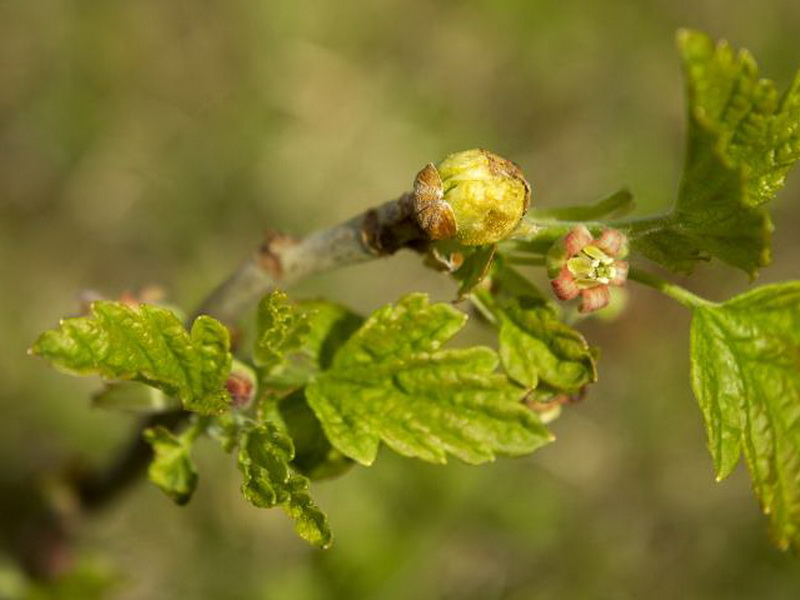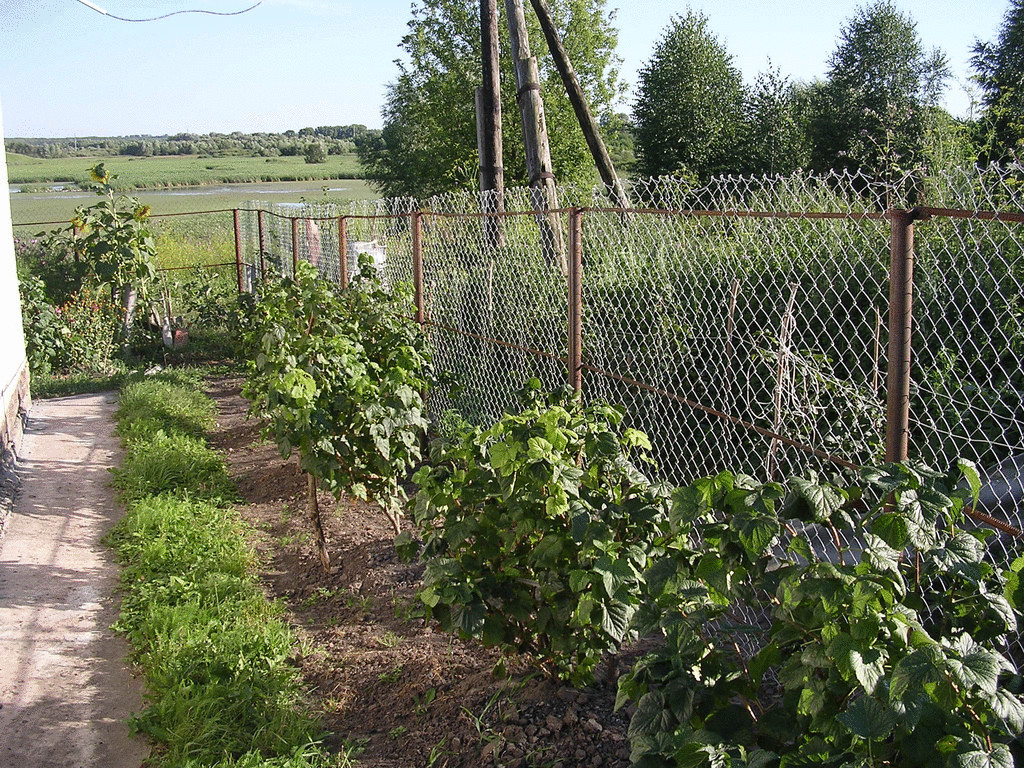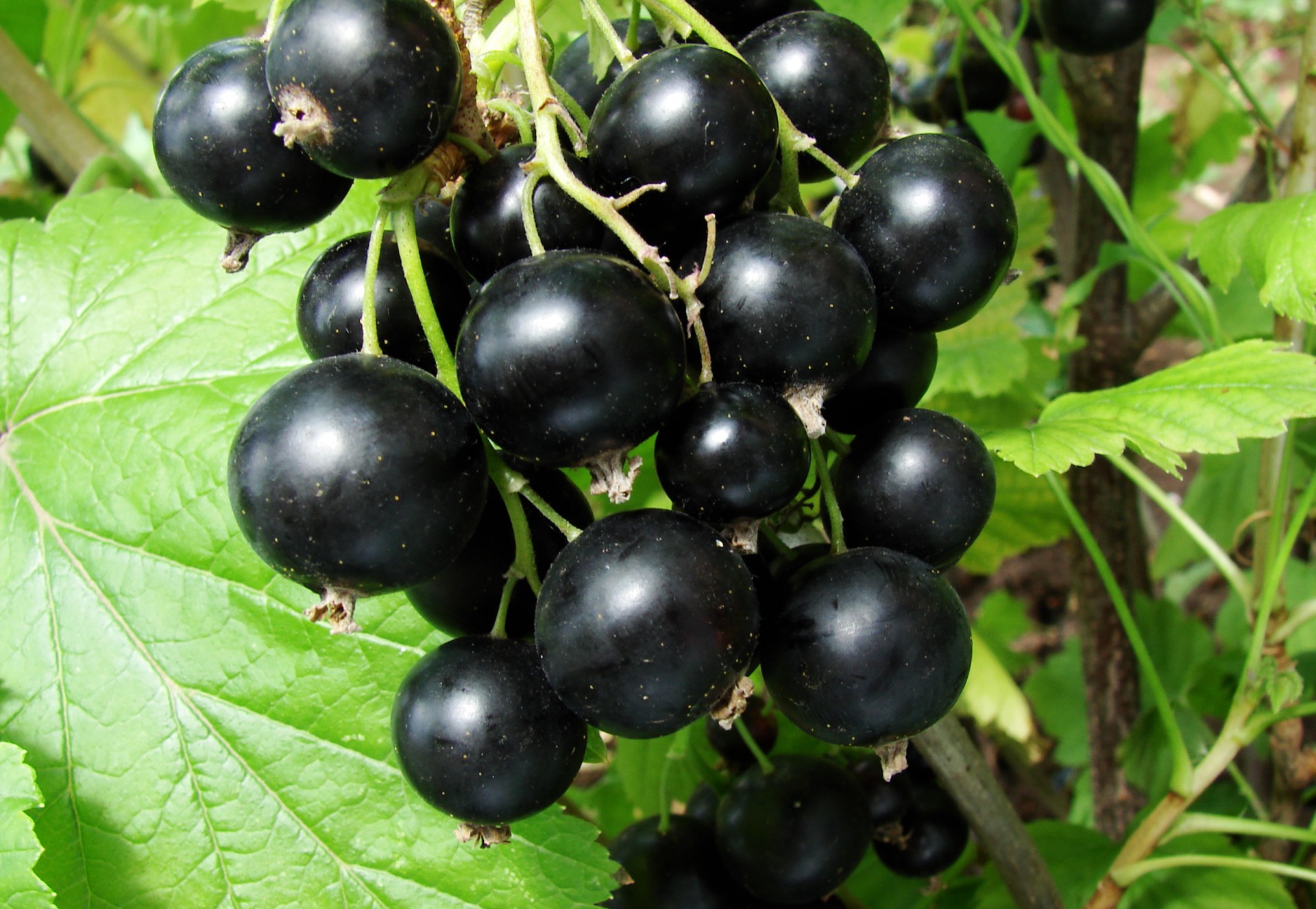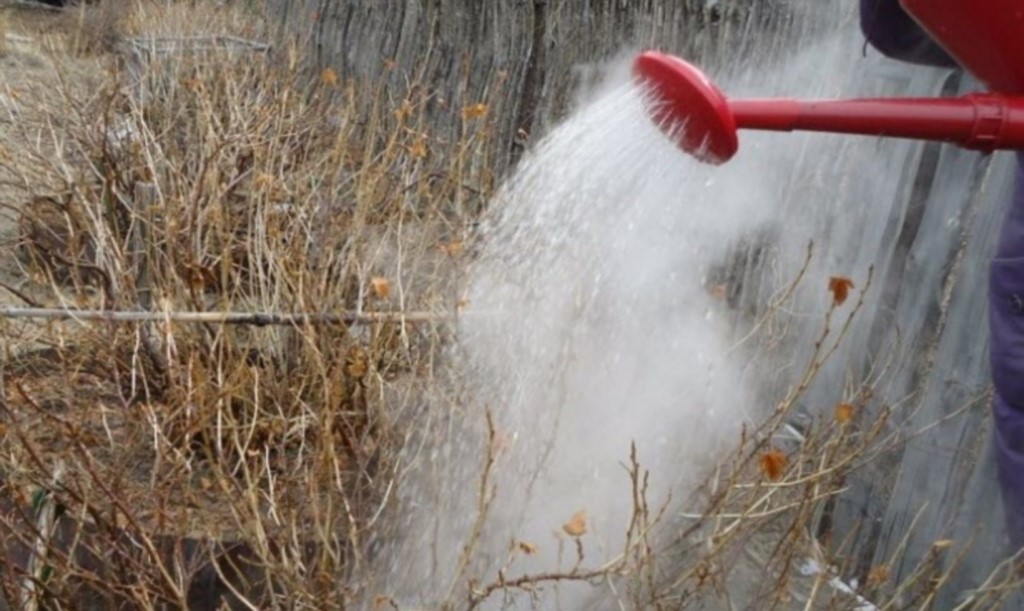Content:
Currants of different varieties are available on the plots of 70% of gardeners. The yield and attractive appearance of the shrubs depend on how the planting was carried out, what kind of care is carried out for the plant in the future. Correct pruning of currants in spring is a guarantee that the bushes will maintain health, visual appeal and will delight you with a good harvest.
Advantages and Disadvantages of Spring Pruning
Correct and timely pruning is essential for all plants. Currant bushes are no exception. In the spring, this procedure should be carried out to get rid of dead, damaged branches and in order to give the bushes the desired shape. Spring pruning, like autumn pruning, has a number of advantages and disadvantages that must be taken into account in order to get a good final result.

A large crop in terms of volume and weight of berries is the result of the competent work of the gardener
Experienced gardeners and specialists in the field of agricultural technology highlight such advantages of spring pruning of currant bushes, such as:
- Elimination of broken, damaged branches - nutrients will only flow to promising branches that can give a good harvest;
- The shrub will be able to form young shoots faster, which will increase yields already this season;
- Getting rid of shoots that in the previous year gave a small amount of berries or did not bear fruit at all - nutrients and trace elements valuable for the shrub will be redistributed to young branches;
- It is necessary to carefully thin out the plantings in order to lighten their central part, since sunlight is important for the berries. Red currant gets a rich color from it, black currant is more actively formed and ripens faster;
- Removing branches frozen over the winter will relieve the load from the bush. You do not need to direct nutrients to restore the branches, therefore, the harvest will be of high quality, the berries are large.
In the case when in the fall no treatment was carried out with special substances - chemical fungicides, or sanitary pruning of shoots was not carried out, insects related to pests could penetrate the bark, which would reduce the health and strength of currants. In order to prevent their development, as well as to reduce the likelihood of bacterial activation, it is required to carry out spring pruning of the branches of the currants available on the site.
It is necessary to take into account the existing shortcomings. Spring pruning requires control of weather conditions, since the optimal period for this type of work is from the moment the snow cover completely disappears to the swelling of the buds and the appearance of the first young leaves. It was at this time that the bush is completely ready for pruning, the process will be transferred without difficulty, the plant will not hurt. In the event that the pruning of currant bushes is carried out later, the likelihood increases that they will feel bad for a long time - the resulting wounds do not heal so quickly. This process can cause young currants or a newly placed seedling to stagnate.Autumn allows you to carry out all the work without haste, but in spring there is very little time, and pests and bacteria are also activated under the influence of heat, which is a disadvantage of this pruning method.
Spring currant pruning rules
In order to trim the currants correctly, you will need to observe the features of this process so that the bushes quickly recover after the procedure. It is important to consult with a specialist before starting, as mistakes will lead to the fact that the crop will be completely lost.
List of basic recommendations for beginner gardeners:
- It is necessary to start pruning at the moment when the danger of night frosts has passed, and the temperature in the daytime has risen more than +5 degrees (the snow, as an indicator of warming, must completely melt);
- If the buds have already formed by the time of pruning, then you need to step back from them (0.5 cm) - this is necessary in order to preserve the leaves. If the branch is long, then the drying process can be provoked;
- It is necessary to remove all branches that grow inside the currant bush, as they create an additional shade, the yield for this reason may be smaller, the berries are smaller;
- A large number of branches inside contributes to the development of microorganisms pathogenic for the flora, bacteria, and pests of various types. For planting, the correct option is to thin out the middle in the spring.
If you cut out the extra shoots correctly, then the formation of shrubs will go faster, their shape will be visually attractive. Young shoots will take up the amount of nutrients necessary for development, without experiencing a lack of them. Ripe berries will be large and sweet (in accordance with the characteristics of the selected variety).
Correct clipping will enhance the growth and development of dormant lateral ocelli. Spring pruning of red or black currants, taking into account these parts, will help in the formation of the shrub - it becomes wider, but grows more slowly in height. You need to start trimming only after the step-by-step lesson has been conducted, if the procedure has not been previously carried out.
Young and old currant pruning
Removal of old or damaged branches should be done at all stages of shrub development. There are some features that must be observed when working with a young or old plant. The first pruning is done after planting. All the shoots available to the seedling must be shortened so that they are at a height of 20 cm from the soil. The peculiarities of working with young plants include the fact that 3-4 healthy eyes should remain above the ground. Such a formation is required in order for more nutrients to go into the root system - the young plant must strengthen. Further development and formation of shrubs occurs due to the fact that nutrients are supplied to the shoots, both from the soil and from the strengthened rhizomes.
If pruning is to be done for the branches of an old shrub, then it should be borne in mind that the process will be long. At the very beginning, the thickest part of the bush is thinned, then all shoots are cut, including healthy ones, which do not grow outward, but inside the bushes. Also eliminated:
- weak (depending on age or illness);
- broken (as a result of weather events or under the weight of snow);
- not yielding (or it is much less than on other shoots).
In addition, annual shoots that are unable to bear fruit for various reasons are pruned.You also need to leave no more than 4 healthy and strong stems from the entire available volume of branches, which will allow the currants to activate the growth function. If drying is noted, then such stems must be cut off completely, and the dried tops of the stems will also need to be removed to allow them to survive. The main condition for successful pruning of old currants (both red and black) is not to leave hemp from the shoots. This is necessary in order to prevent the multiplication of pathogenic microorganisms that can move to healthy shoots.
Pruning of black, red and white currant bushes
Currant varieties are subdivided into:
- white (golden);
- black;
- red (pink).
Black currant differs from others in the process of development and formation of fruits. That is why each species has its own specifics for pruning shoots in the spring. When carrying out work, it must be remembered that the fruits are formed and ripen in black currants on the branches of 1-3 years of age. Also, the peculiarities include the fact that the older the branch, the less berries it will have. The optimum age for pruning branches is 5-7 years.
Red and white currants show good yields on older branches. You do not need to completely remove the branches, but you will need to shorten it. It is recommended to carry out the process of rejuvenating the shrub of white and red currants - this should be done once every 7 years. The pruning procedure in this case must be carried out after harvesting - in the fall. All the steps that need to be carried out to remove damaged branches in red and white currants are carried out exclusively in the spring, when active sap flow along the stems begins, as this contributes to the early healing of wounds.
Currant pruning scheme in spring
Correct pruning of currants in the spring should be carried out according to a special scheme so that the efficiency of the work is high. Planting should also be carried out according to certain rules - this will affect the yield. It is important to choose the right site where the shrub will be planted. It is not recommended to plant too close - this leads to a thickening of the space.
In order to trim, you should:
- prepare gardening tools (knife, pruner, scissors);
- disinfect them (potassium permanganate is used);
- use a pruning scheme suitable for the type of currant available.
To process black currant in the spring, the following steps are taken:
- in the first year, pruning is not carried out, since the plant grows root mass and strengthens the stems;
- in the second year after planting in the ground, the formed small growth is eliminated, but 3-4 of the largest and strongest shoots remain;
- in the third and fourth years, it is necessary to remove all zero shoots, weak and dry, in order to prevent the growth of bacteria and microorganisms harmful to the shrub.
Starting from the fifth year, it is necessary to thin out, remove young shoots, and monitor the formation of the crop.
Correct pruning of black, white or red currants in the spring by novice gardeners should be done as follows:
- every year, all excess branches are removed from red and white currants (until the first buds swell and the juice moves actively along the stems);
- after harvesting, you also need to prune;
- the removal of old shoots from white and red currants is carried out in the fourth year.
Leaving after spring pruning
In order to get a high yield, it is important to know not only how to prune black currants in the spring, but also how to care for the shrub after the main procedure. All actions should be started immediately after pruning to reduce the likelihood of disease.For this purpose, a garden pitch is used, which must be applied to the cut site.
Trim procedure errors
You need to know not only how to cut currants, taking into account the peculiarities of its type, but also take into account possible mistakes. The shrub needs to be trimmed carefully. A currant that starts developing a new crop must already be processed. In 90% of cases, inexperienced gardeners make the following mistakes:
- violation of the timing of pruning branches - in this case, the bushes begin to form green mass instead of fruits;
- old branches remain and are not removed - the nutrients and vitamins necessary for the plant are spent on the restoration of damaged branches, so the berries can be smaller and sour in taste, and the harvest itself is smaller in volume;
- if pruning is carried out at a time when the leaves have already blossomed, there will be a prolonged release of juice, the shoots will tighten wounds longer.
High-quality pruning of any kind of currant in the spring is a mandatory agrotechnical procedure that allows you to get a good harvest in terms of volume. You need to know in advance how to trim the formed currants in order to reduce the likelihood of diseases, penetration of pests. All features and recommendations must be taken into account before starting work, so that the presentation of the finished type of shrub is successful.

















